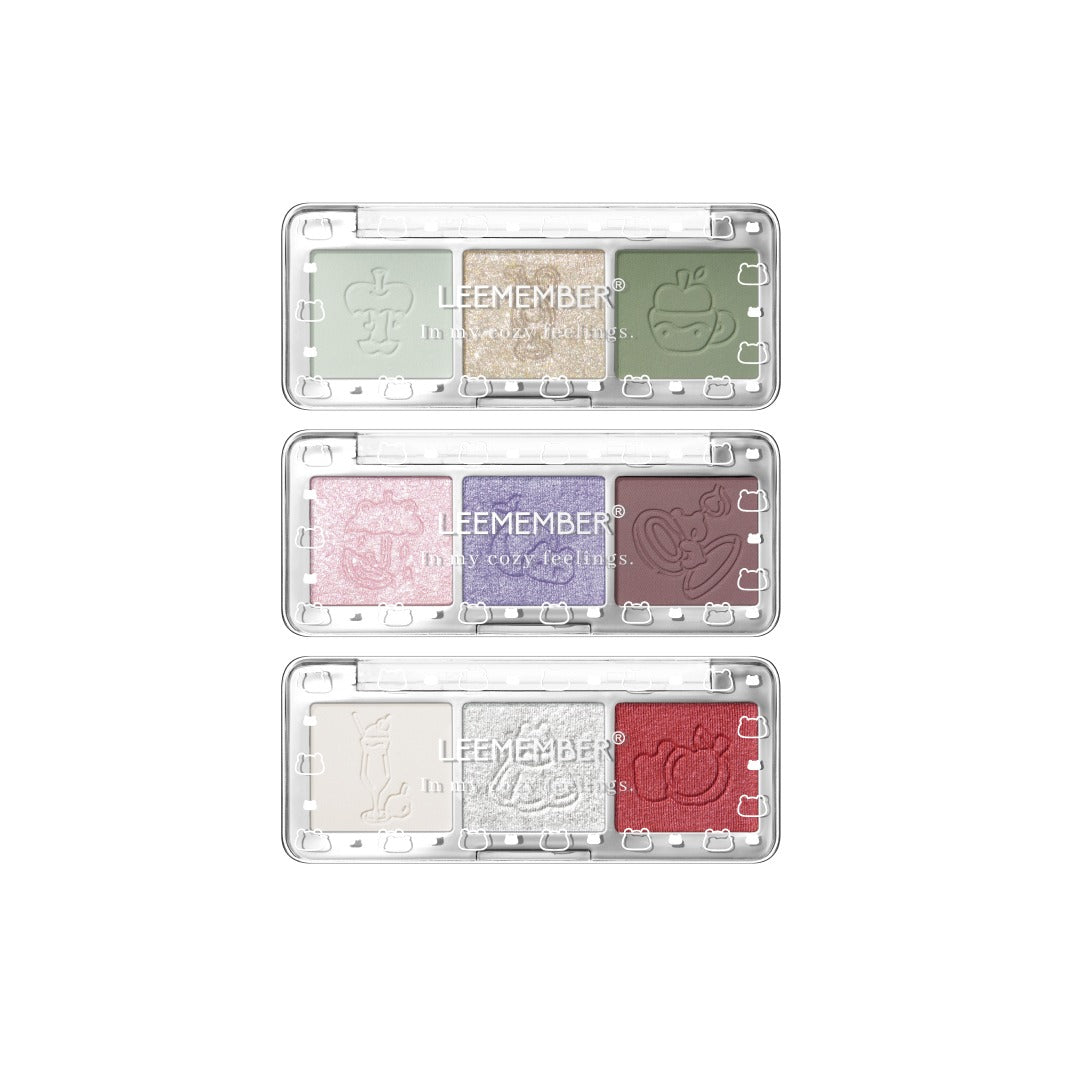
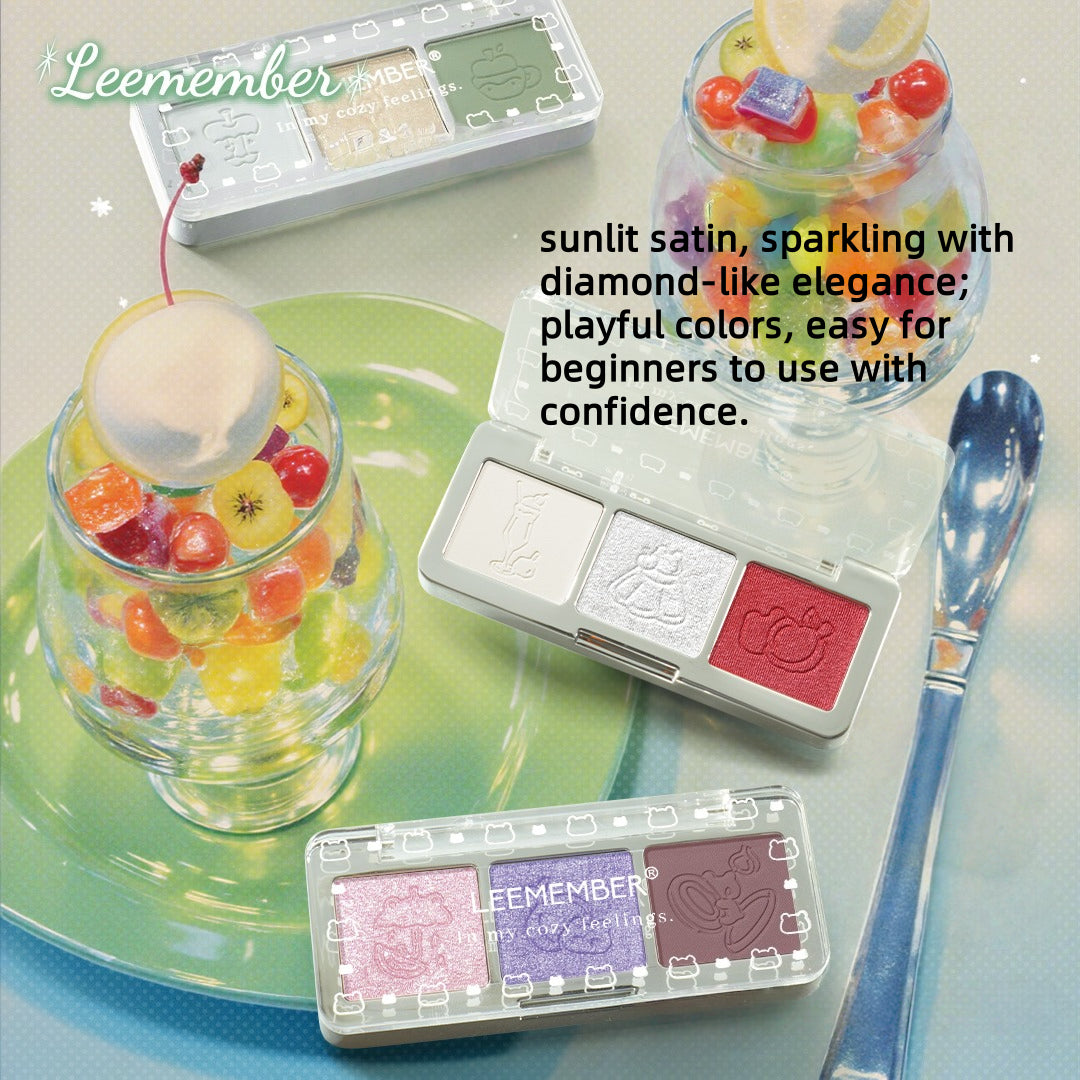

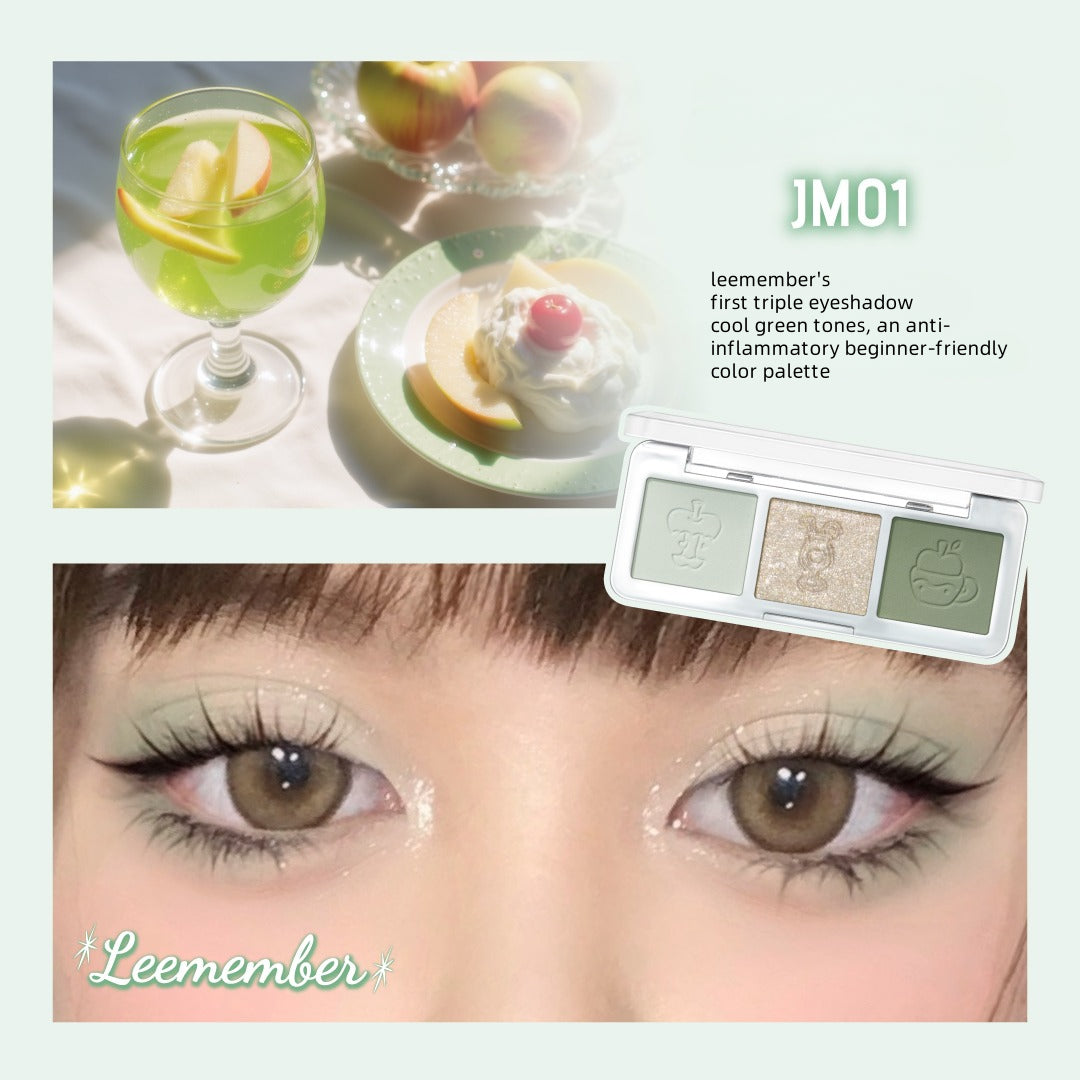
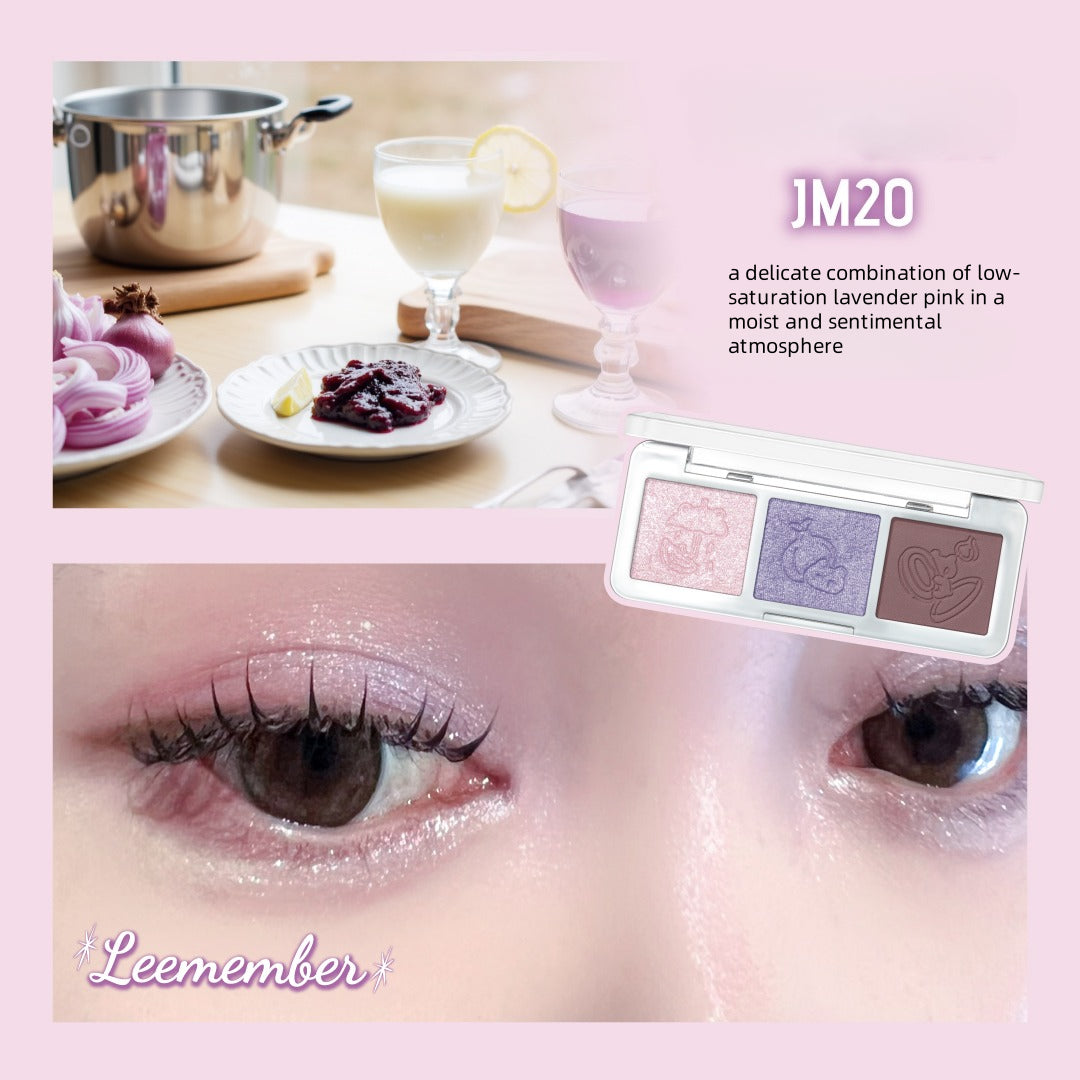
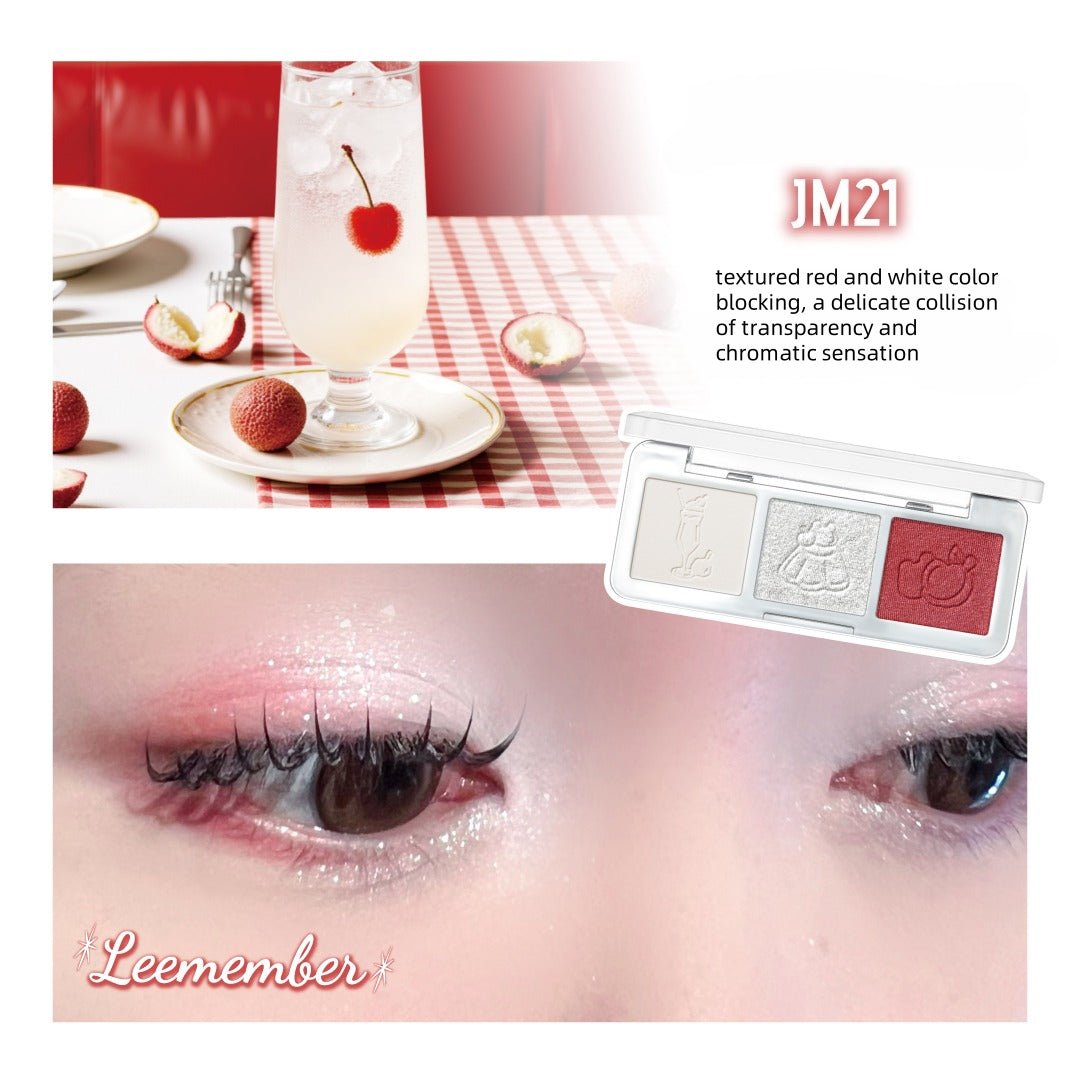
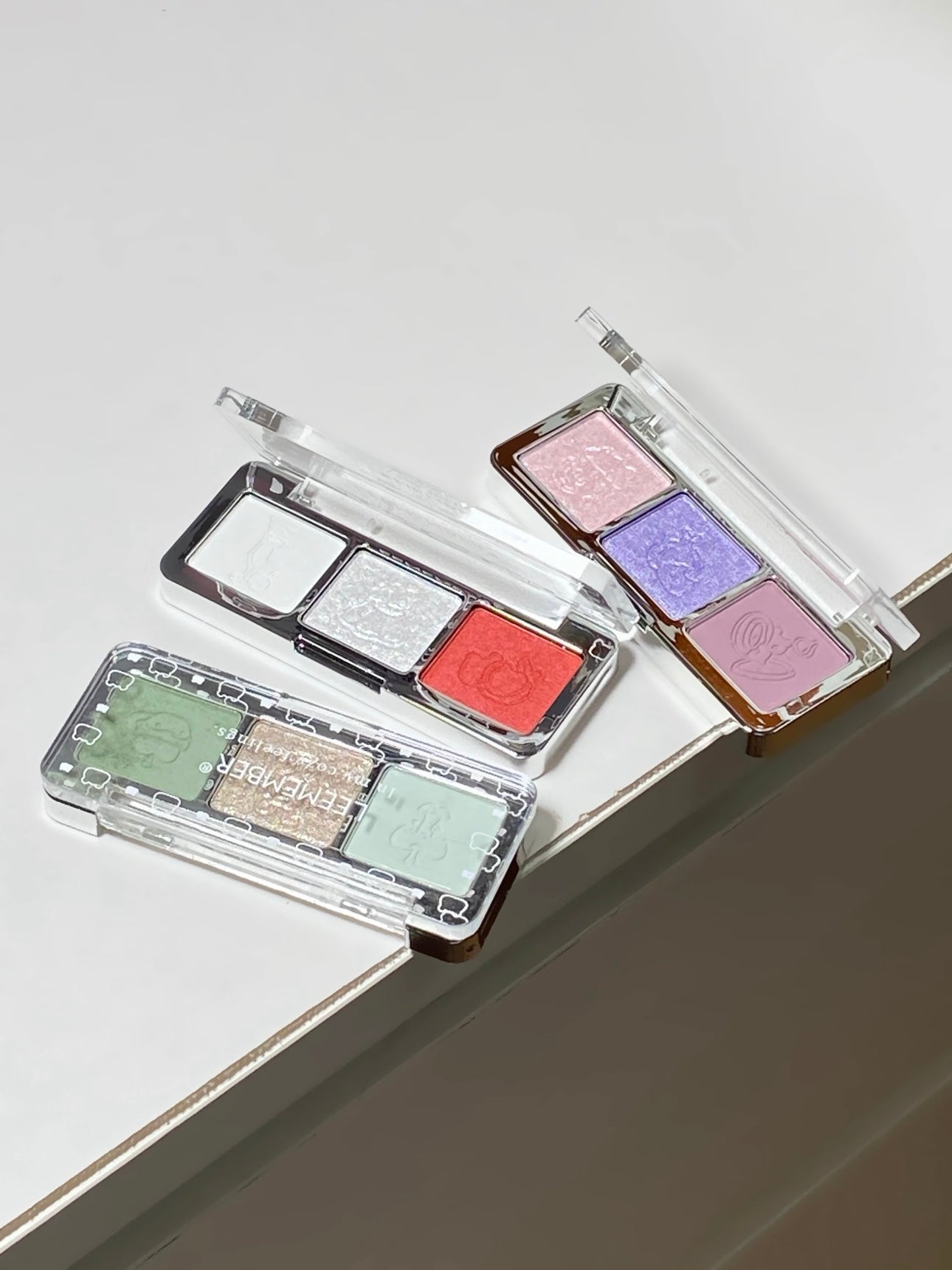
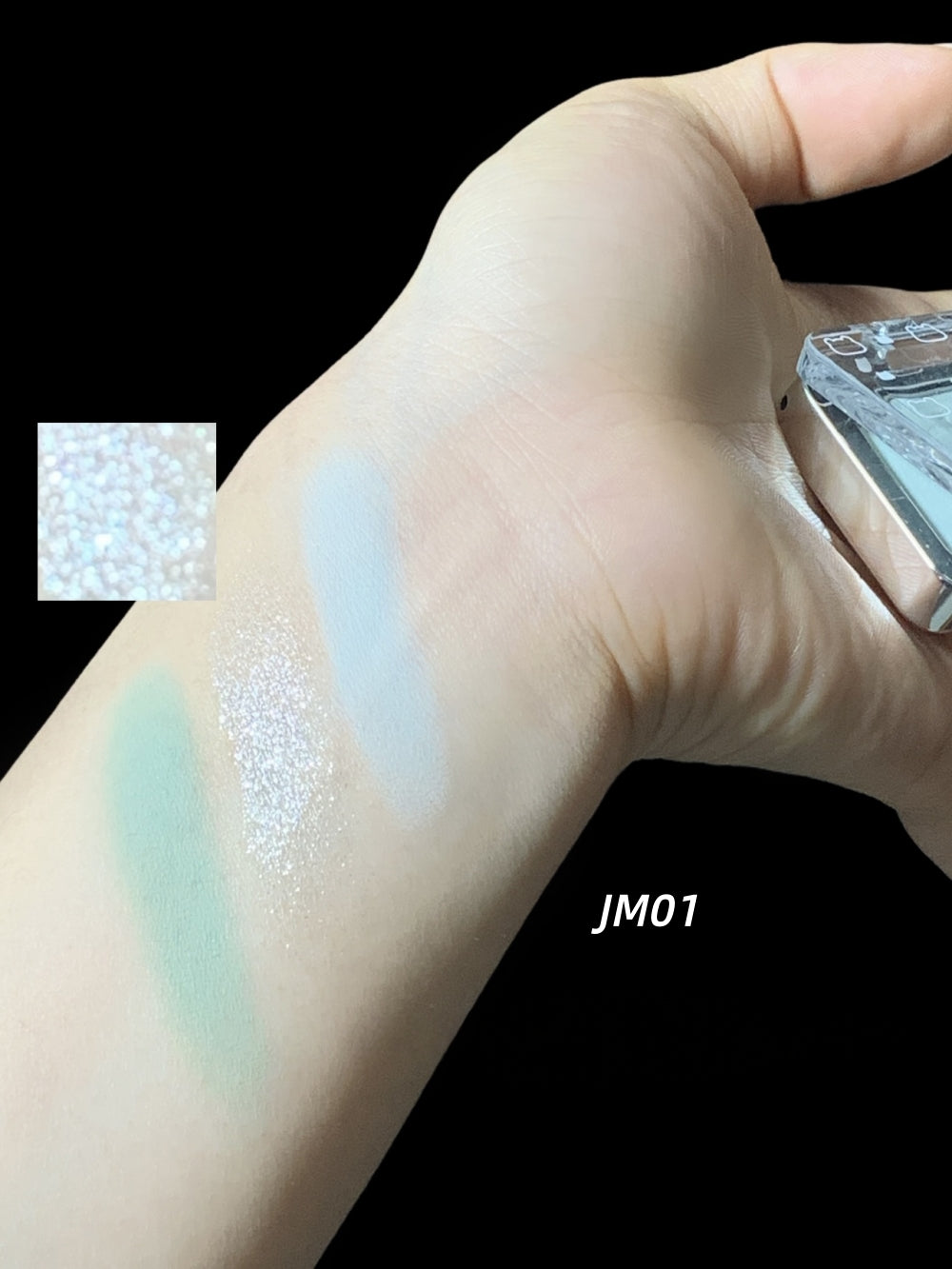
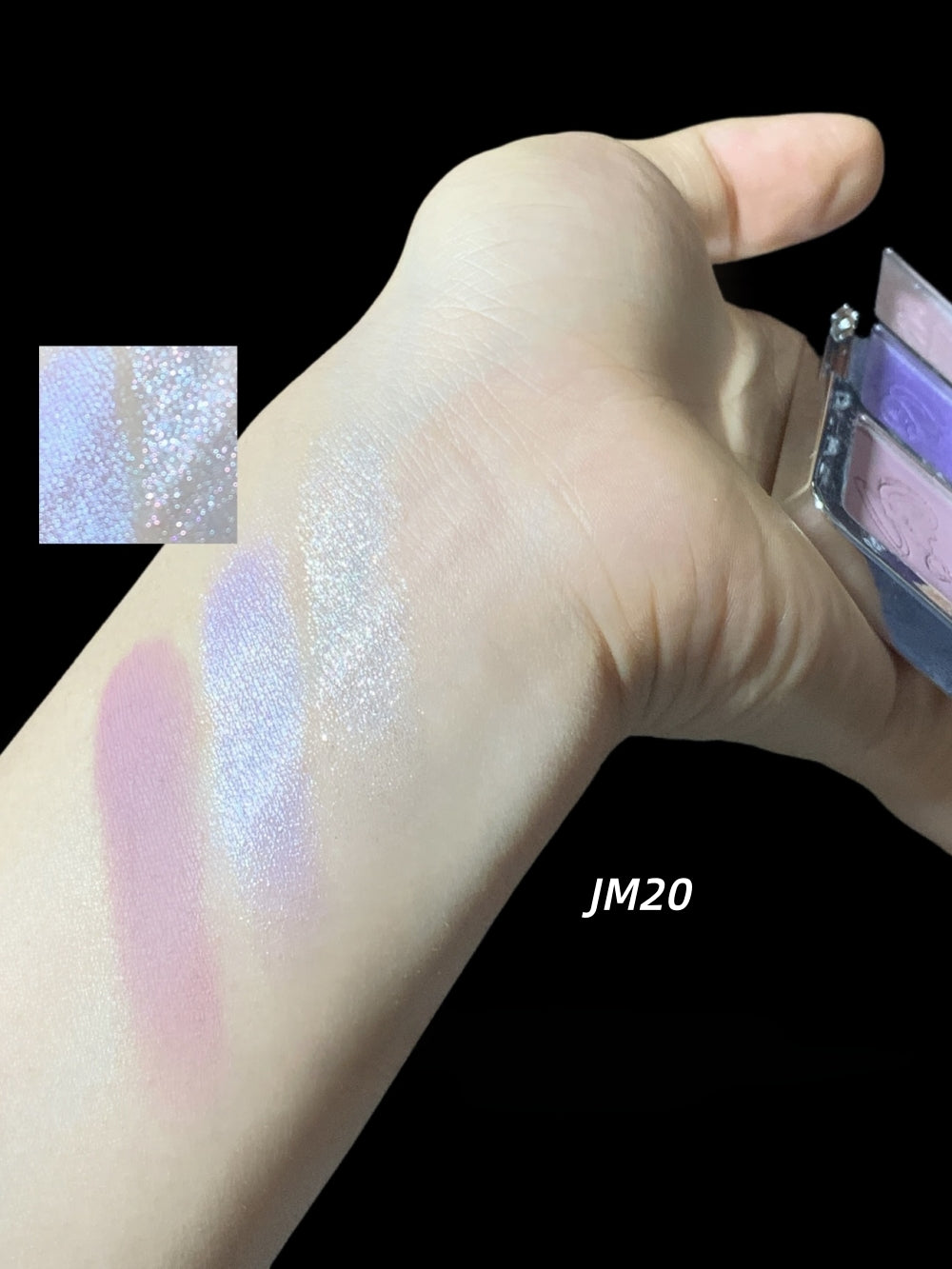
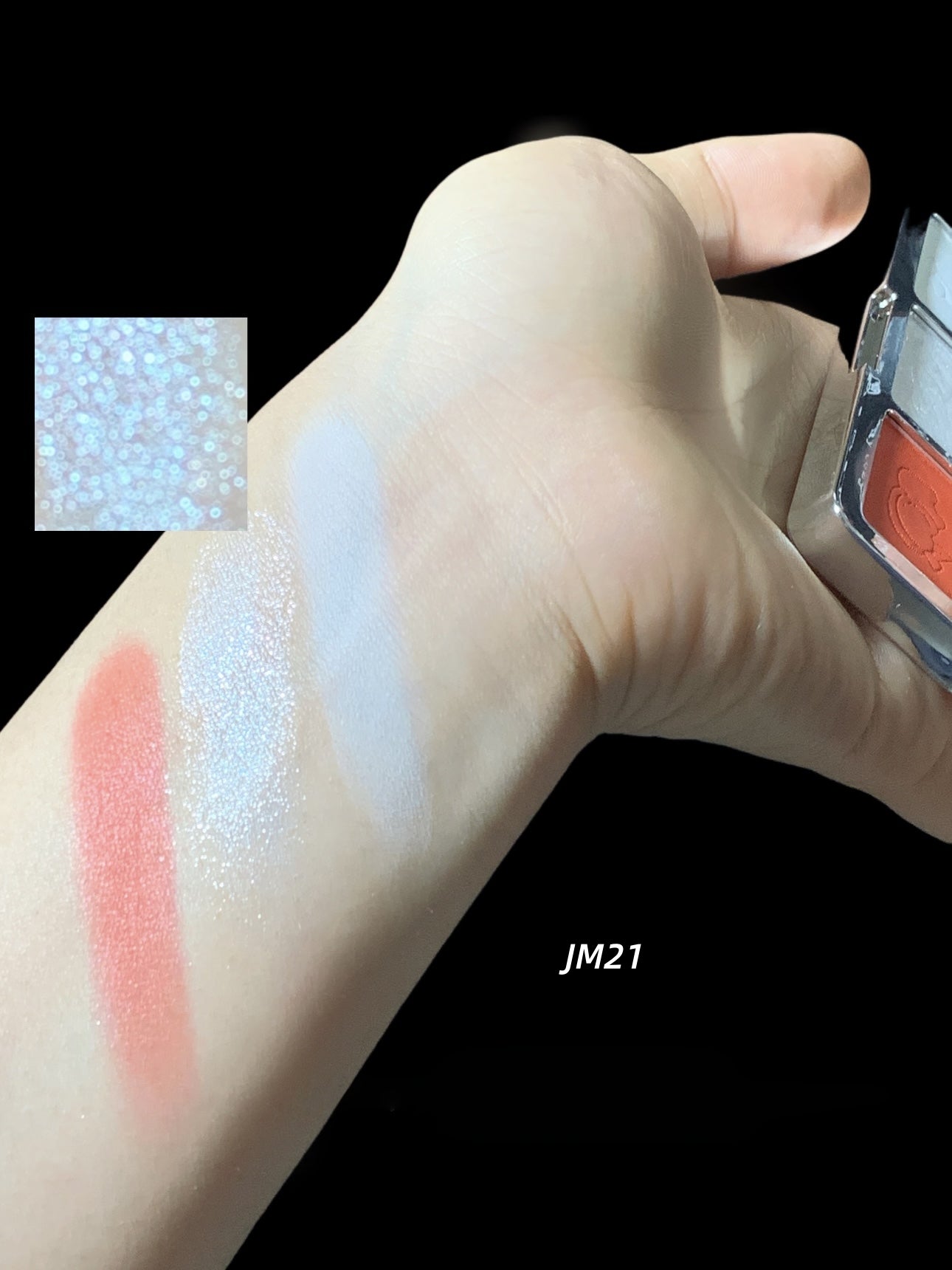
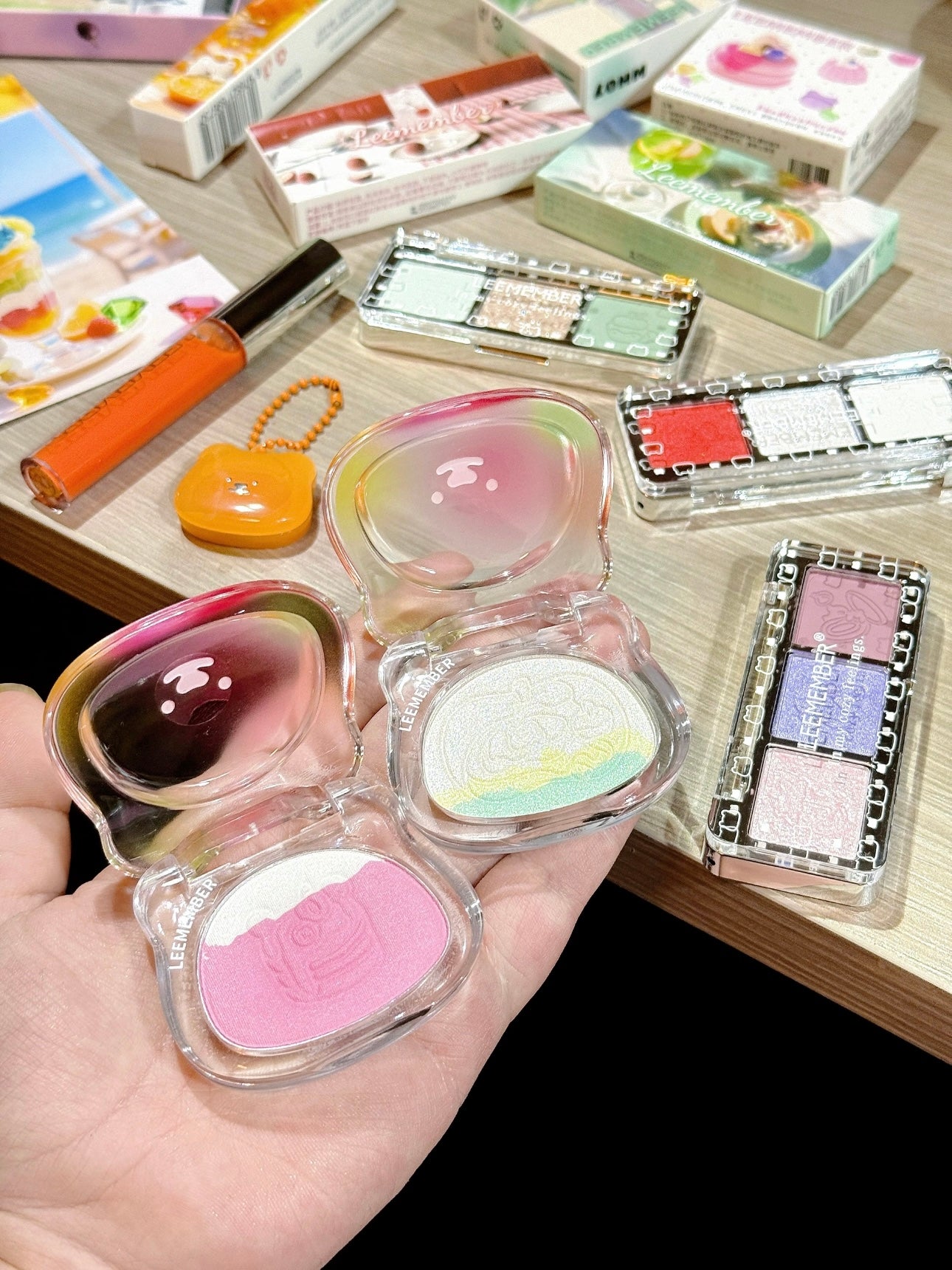
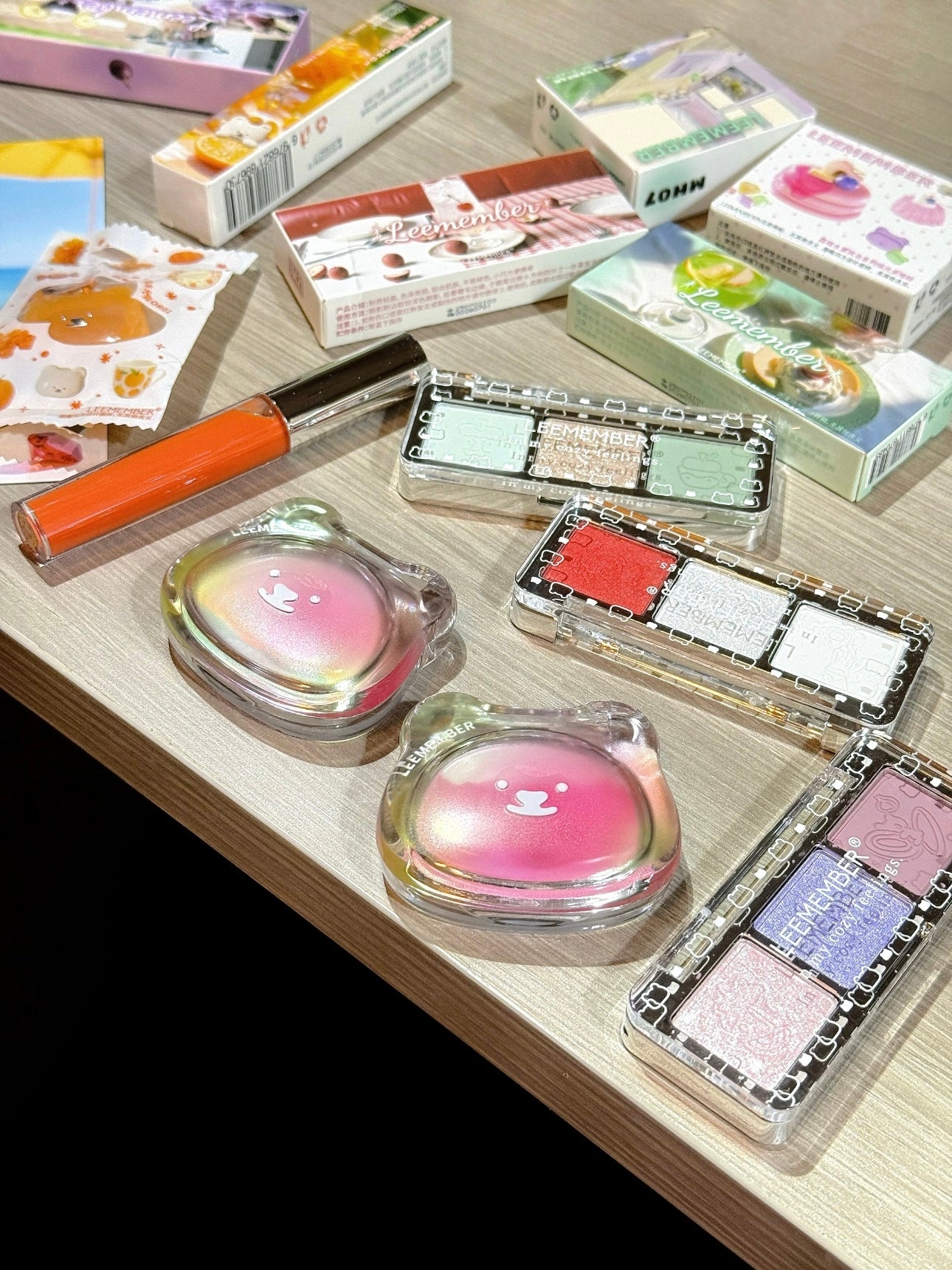
Tri-color Eye Shadow 4.8g
- ITSELF OR THE RELATED
- STORE WIDE
- An ADDON DISCOUNT
- Makeup: Buy 2 Get 10% Off, Not including tools, eyelashes, nails or skincare.
- Storewide: Buy 6 Get 20% Off.
- Hit by CODE "2025"
Discount Terms
- MEMBER DISCOUNT
- Enjoy your 20% Off code when cart>10USD, entry from Level ROSE.
- Member Tiers
- NEW AND JUST TRY US
- Sign in our newsletter to use code "NEWS" for your first order 10% Off.
- No minimum requirement.
Smile Earth and Green Shopping: Chic Decent uses 100% Biodegradable Eco-Friendly Packaging.
Why Choose It?
- Intense, blendable color with a luxuriously smooth, velvety feel.
- Impressive longevity by resisting creasing and fading caused by oils and movement.
- Minimal fallout due to strong adherence mechanisms.
- Versatile finishes within one palette.
- Light skin nourishment and protection via select oils and antioxidants.
- Stable and well-preserved formulation.
Intense, True-to-Pan Color Payoff:
- High concentrations of pigments (CI codes) combined with light-reflective micas and synthetics ensure vibrant, opaque color with minimal product.
- Result: Bold, impactful looks with effortless application.
Seamless, Effortless Blendability:
- Silicones (Dimethicone, Polymethicone), emollient esters (Octyldodecyl Stearoyl Stearate), and lubricants (Magnesium Stearate) create a smooth, slippery texture.
- Result: Shadows glide onto lids and blend into each other without patchiness or harsh lines.
Long-Lasting, Crease-Resistant Wear:
- Film-formers (PMMA, HDI Crosspolymer, Trimethylsiloxysilicate) create a flexible, water-resistant barrier. Oil absorbers (Silica, Kaolin) combat sebum.
- Result: Color stays vibrant and locked in place for hours without fading, smudging, or settling into creases.
- Smooth, Velvety-Soft Texture:
- Engineered powders (Synthetic Fluorphlogopite, Boron Nitride, Calcium Sodium Borosilicate) and smoothing silicones provide a cushioned, silky feel.
- Result: A weightless, comfortable sensation on delicate eyelids – never chalky or dry.
Minimal Fallout:
- Adhesive powders (Silica, Boron Nitride), binding agents (Dimethicone Crosspolymer), and film-formers help particles cling to skin and each other.
- Result: Significantly less powder dropping under your eyes during application or wear.
Buildable & Versatile Finishes:
- The specific combination of pigments, micas, synthetics, and spherical powders across the 3 shades allows for diverse effects (matte, satin, shimmer, metallic).
- Result: Create countless looks – from subtle daytime to dramatic evening – with one compact.
Subtle Skin Nourishment & Protection:
- Macadamia Seed Oil and Caprylic/Capric Triglyceride offer light conditioning. Tocopheryl Acetate (Vitamin E) provides antioxidant defense. Dimethicone forms a protective barrier.
- Result: Gentle care for delicate eye area while wearing makeup.
Ingredients
JM01
- ["Talc", "Synthetic Fluorphlogopite", "Polymethyl Methacrylate", "Silica", "CI 77891", "Kaolin", "Magnesium Stearate", "Triethoxycaprylylsilane", "Octyldodecyl Stearoyl Stearate", "HDI/Trimethylol Hexyllactone Crosspolymer", "CI 77288", "Caprylic/Capric Triglyceride", "MACADAMIA INTEGRIFOLIA SEED OIL", "Dimethicone", "Cetyl Dimethicone", "Tocopheryl Acetate", "CI 77499", "CI 77007", "phenoxyethanol", "methicone", "hexadecene", "ethylhexylglycerin"]
- ["dimethicone", "calcium aluminum borosilicate", "calcium sodium borosilicate", "trimethylsiloxysilicate", "hydrogenated polyisobutene", "silver", "boron nitride", "magnesium stearate", "synthetic fluorphlogopite", "silica", "dimethicone crosspolymer", "mica", "CI 77491", "CI 77891", "tin oxide", "tocopheryl acetate", "phenoxyethanol", "methicone", "ethylhexylglycerin"]
- ["talc", "synthetic fluorphlogopite", "CI 77288", "Polymethyl Methacrylate", "Silica", "Kaolin", "Magnesium Stearate", "Octyldodecyl Stearoyl Stearate", "Triethoxycaprylylsilane", "HDI/Trimethylol Hexyllactone Crosspolymer", "CI 77891", "Caprylic/Capric Triglyceride", "MACADAMIA INTEGRIFOLIA SEED OIL", "Dimethicone", "CI 77499", "Cetyl Dimethicone", "Tocopheryl Acetate", "CI 77492", "Phenoxyethanol", "Methicone", "Hexadecene", "Ethylhexylglycerin"]
JM20
- ["Calcium sodium borosilicate", "Polydimethicone", "Talc", "Trimethylsiloxysilicate", "Synthetic fluorphlogopite", "Hydrogenated polyisobutylene", "Silica", "Magnesium stearate", "Boron nitride", "Titanium dioxide", "CI 77891", "Dimethicone Crosspolymer", "Isononyl Isononanoate", "Microcrystalline Wax", "Mineral Oil", "Mica", "Tin Oxide", "Tocopheryl Acetate", "Triethoxycaprylylsilane", "Phenoxyethanol", "Methicone", "Iron Oxides", "Hydrogenated (Styrene/Isoprene) Copolymer", "Ethylhexylglycerin", "BHT"]
- ["Dimethicone", "Synthetic Fluorphlogopite", "Titanium Dioxide", "Trimethylsiloxysilicate", "Hydrogenated Polyisobutene", "Mica", "Boron Nitride", "Magnesium Stearate", "CI 77891", "Dimethicone Crosspolymer", "Silica", "Tin Oxide", "Tocopheryl Acetate", "Phenoxyethanol", "CI 77742", "Polymethicone", "Ethylhexylglycerin"]
- ["Talc", "Synthetic Fluorphlogopite", "Kaolin", "Boron Nitride", "Polymethyl Methacrylate", "Silica", "CI 77007", "Magnesium Stearate", "Octyldodecyl Stearoyl Stearate", "Triethoxycaprylylsilane", "CI 77891", "Caprylic/Capric Triglyceride", "MACADAMIA INTEGRIFOLIA SEED OIL", "CI 15850", "CI 77491", "Polydimethicone", "Cetyl Dimethicone", "CI 77499", "Alumina", "Tocopheryl Acetate", "CI 45410", "phenoxyethanol", "methicone", "hexadecene", "ethylhexylglycerin"]
JM21
- ["CI 77891", "Talc", "Synthetic Fluorphlogopite", "Silica", "Kaolin", "Polymethyl Methacrylate", "Mica", "Triethoxycaprylylsilane", "Magnesium Stearate", "Octyldodecyl Stearoyl Stearate", "Magnesium Myristate", "Caprylic/Capric Triglyceride", "MACADAMIA INTEGRIFOLIA SEED OIL", "Dimethicone", "Cetyl Dimethicone", "Tocopheryl Acetate", "Phenoxyethanol", "CI 77742", "CI 77499", "hexadecene", "ethylhexylglycerin"]
- ["calcium sodium borosilicate", "dimethicone", "talc", "trimethylsiloxysilicate", "synthetic fluorphlogopite", "hydrogenated polyisobutene", "magnesium stearate", "CI 77891", "boron nitride", "silica", "dimethicone crosspolymer", "isononyl isononanoate", "microcrystalline wax", "mineral oil", "tocopheryl acetate", "triethoxycaprylylsilane", "phenoxyethanol", "methicone", "hydrogenated (styrene/isoprene) copolymer", "tin oxide", "ethylhexylglycerin", "butylated hydroxytoluene"]
- ["synthetic fluorphlogopite", "dimethicone", "titanium dioxide", "trimethylsiloxysilicate", "stearyl dimethicone", "hydrogenated polyisobutene", "CI 15850", "boron nitride", "magnesium stearate", "CI 77491", "silica", "dimethicone crosspolymer", "CI 15985", "Tin Oxide", "Tocopheryl Acetate", "Phenoxyethanol", "Methicone", "Ethylhexylglycerin"]
Apply and Precautions
PRECAUTIONS:
- Patch Test: Always patch test new products, especially near eyes. Apply a small amount to your inner arm or behind the ear. Wait 24 hours for any reaction (redness, itching, swelling) before using near eyes.
- Eye Sensitivity: Avoid direct contact with the eyeball. If product gets into the eye, rinse immediately with plenty of cool water. Discontinue use if irritation (stinging, redness, watering) occurs.
- Damaged Skin: Do not apply to broken, irritated, or infected skin on the eyelids or surrounding area.
- Ingredient Sensitivities: Check the ingredient list against your known allergies. Common potential sensitizers include certain pigments (CI numbers), phenoxyethanol (preservative), and specific silicones (though generally well-tolerated).
- Expiry & Hygiene: Avoid introducing moisture (like wet brushes) directly into the pan to prevent bacterial growth. Clean applicators regularly.
- Talc Safety: While cosmetic-grade talc is rigorously purified, some individuals prefer talc-free products. The formula also relies heavily on Synthetic Fluorphlogopite.
HOWTOAPPLY
PREP: Start with clean, dry eyelids. Apply an eyeshadow primer or a thin layer of concealer/foundation set lightly with translucent powder. This creates a smooth, even base, enhances color payoff, and improves longevity by controlling oils.
TOOLS:
- For Precision/Pigment: Use synthetic bristle eyeshadow brushes (flat shader, tapered blending, pencil brushes).
- For Intensity/Shimmer: Use your fingertip (warmth helps melt silicones for more metallic/sheer impact).
- For Minimal Fallout: Tap off excess product from the brush before applying. Use a slightly dampened brush for intense metallic/shimmer shades (check shade suitability first).
APPLICATION TECHNIQUE (Classic Tri-Color Gradient):
- Base/Lid Shade (Often Lightest/Shimmery): Pick up the shade intended for the eyelid (usually the largest pan or middle shade). Apply generously over the mobile lid using a flat shader brush or fingertip. Pat/press for maximum intensity.
- Crease/Transition Shade (Often Mid-Tone Matte/Satin): Use a fluffy blending brush with the mid-tone shade. Apply softly into the crease and slightly above, using windshield wiper motions. Blend thoroughly to diffuse edges. This creates depth and dimension.
- Accent/Deepener Shade (Often Darkest Matte/Satin): Use a smaller pencil brush or tapered brush with the darkest shade. Apply lightly to the outer corner of the eye and along the outer third of the crease. Focus on the lash line for definition. Blend meticulously into the mid-tone shade to avoid harsh lines. Can also be smudged along the upper or lower lash line.
- BLEND: Continuous blending is key to a seamless look. Use a clean, fluffy blending brush to soften any harsh lines between shades after each step.
- HIGHLIGHT (Optional): Use the lightest shade (or a separate highlighter) on the inner corner and brow bone for an extra lift.
- FINISH: Clean up any fallout under the eyes with a makeup wipe or translucent powder on a brush. Apply eyeliner and mascara as desired.
PRO TIPS FOR THIS FORMULA:
- Layering: Build color intensity gradually. This formula blends beautifully but is also pigmented.
- Fallout Management: Do eye makeup before foundation/concealer to easily clean fallout. Hold a tissue under the eye while applying.
- Longevity Boost: For oily lids or extra-long wear, set your primer with a tiny amount of translucent powder before applying shadow. Consider using a long-wear eyeshadow base.
- Shimmer Control: To tone down intense shimmer, gently blend a matte shade over the top.
- Clean Brushes: Dirty brushes muddy colors and reduce blendability. Clean them regularly.
By following these precautions and application steps, you can maximize the beautiful color payoff, blendability, and long-wear benefits of this product.
STORAGE:
- This product is a cosmetic for adults, please keep it out of the reach of infants and children.
- Store at room temperature.
ITEM BRIEF
- Serial Number: LM041;
- Purpose: Eye Makeup;
- Options: 3;
- Net Content: 4.8g;
- Origin: Made in China;
- Shelf Life: 3 Years;
SHIPPING
- Order processed and shipped out in 1-3 Business Days;
- Express by DHL Generally in 2-7 Days;
- Standard Delivery in 4-15 Business Days.
- Quick solution with returns and refunds.
- More details in Shipping Policy.
Choose options












Share An Inspiration
let this little thing illustrate.
